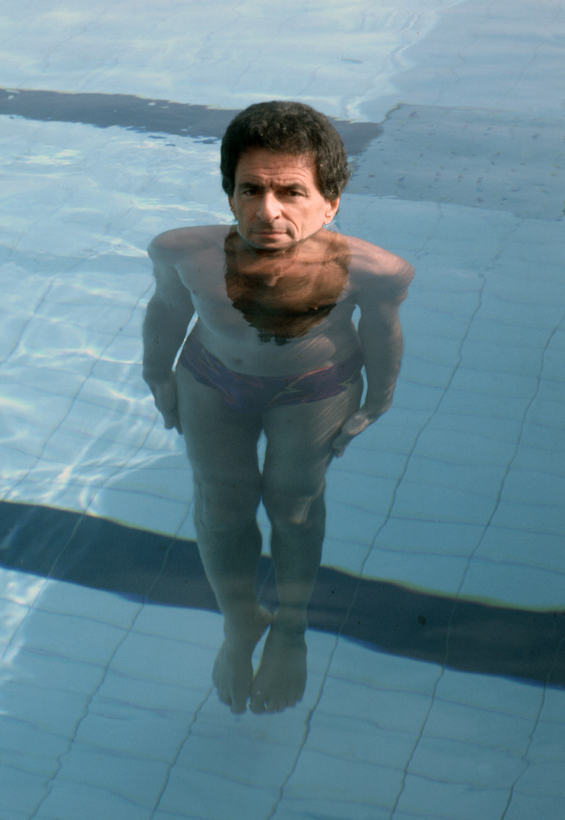It took the Czech director Václav Marhoul 11 years to make his film version of Jerzy Kosiński’s controversial Holocaust novel The Painted Bird. Two of those were spent negotiating the film rights to Kosiński’s book, which the Polish writer had refused to cede during his lifetime. According to Marhoul, Kosiński, who committed suicide in 1991 at the age of 57 after accusations of plagiarism and falsifying his life story, even turned down his good friend Warren Beatty in whose film Reds he had appeared as a Bolshevik bureaucrat.
When the deal was finally signed, Marhoul, 60, celebrated by downing 27 whiskeys in 10 hours. “I was so happy to have the rights, yet incredibly stressed that I now had to make this film of a book that has had millions of readers all over the world,” he explained.
The Painted Bird, out now through select U.S. cinemas and drive-ins, is Marhoul’s third film and his first to gain international critical acclaim.
Love and War
The filmmaker’s background as a Czech Army veteran and UNICEF volunteer in Rwanda drew him to Kosiński’s tale about a young boy who is compelled to roam the countryside of Eastern Europe during World War II after he is abandoned by his parents. “For me the idea about how important it is to love somebody is the whole essence of The Painted Bird,” he said. “When you read the book the light is only really visible in the dark.”

In Marhoul’s film, the young Jewish boy, who is played with feral intensity by neophyte Czech actor Petr Kotlár, encounters what Hillary Clinton once famously called “a basket of deplorables.” These squabbling, superstitious villagers live in small settlements, which Kosiński describes in his novel as having been “neglected for centuries.” The Painted Bird is so named because of an emblematic act of cruelty whereby a peasant paints the wings of a sparrow; released among its flock, the bird is taken for an intruder and pecked to death.
However, whereas Kosiński’s novel is unremittingly bleak, Marhoul’s film balances the horror by emphasizing the moments of kindness and hope. In one such incident the boy’s life is spared by a German soldier (Stellan Skarsgård) who has been ordered to execute him; in another he is saved from being beaten to death by an ailing priest played by Harvey Keitel.
A peasant paints the wings of a sparrow; released among its flock, the bird is taken for an intruder and pecked to death.
The contrasting reactions to Marhoul’s film, which contains allusive scenes of child abuse, rape, and bestiality, quickly surfaced at its Venice Film Festival premiere, last September. The film provoked a flurry of walkouts—especially during a scene in which a miller, played by Udo Kier, uses a spoon to pluck out the eyeballs of a love rival—and yet it received the festival’s UNICEF prize, voted for by 18 Italian 18-year-olds. “The teenagers I spoke to credited the violence in the film for not being obscene,” Marhoul said. “They said that Quentin Tarantino’s films shocked them far more.”

Marhoul’s aesthetic choices, such as shooting his film, which clocks in at just under three hours, in the 35-mm. black-and-white Cinemascope format, as opposed to color and digital, were also motivated by a desire not to shock. “I experimented with a digital camera, but it produced an image that was too sharp and detailed,” he said. “I also found that black and white was less naturalistic than color.” More groundbreaking still was Marhoul’s decision to shoot The Painted Bird primarily in Interslavic—a constructed Slavic language originally created in 2006—the first film ever to do so. His reasons were twofold: he wanted to remain faithful to the tenor of Kosiński’s novel, which never defines which Eastern European country his story takes place in; and, he says, he didn’t “want for any nation to be associated with the villagers in the film.”
His concerns would count for nothing when Marhoul presented his film to journalists in Poland, where Kosiński was born and where he remains a vilified figure. “The first question was always the same. They all said to me, ‘Do you know that Jerzy Kosiński was a liar?’” Up to the publication of The Painted Bird in the United States, in 1965, Kosiński maintained that his novel was semi-autobiographical and that he, too, had been abandoned during the war by his parents. The harrowing stories Kosiński told about his past and his lightning literary success in a language that was not his own bewitched New York’s café society as it murmured gossip about his sexual adventures.
It later materialized that Kosiński, together with his parents, had actually been sheltered by Poles who risked their lives to harbor a Jewish family. Kosiński rode out the scandal of his first novel, but his books were never again taken at face value.
“I don’t think The Painted Bird will ever be distributed in Poland,” Marhoul said. “Of course we now know it’s fiction, but that never mattered to me, because the story is what counts for me.”
Tobias Grey is a writer and critic based in Gloucestershire


